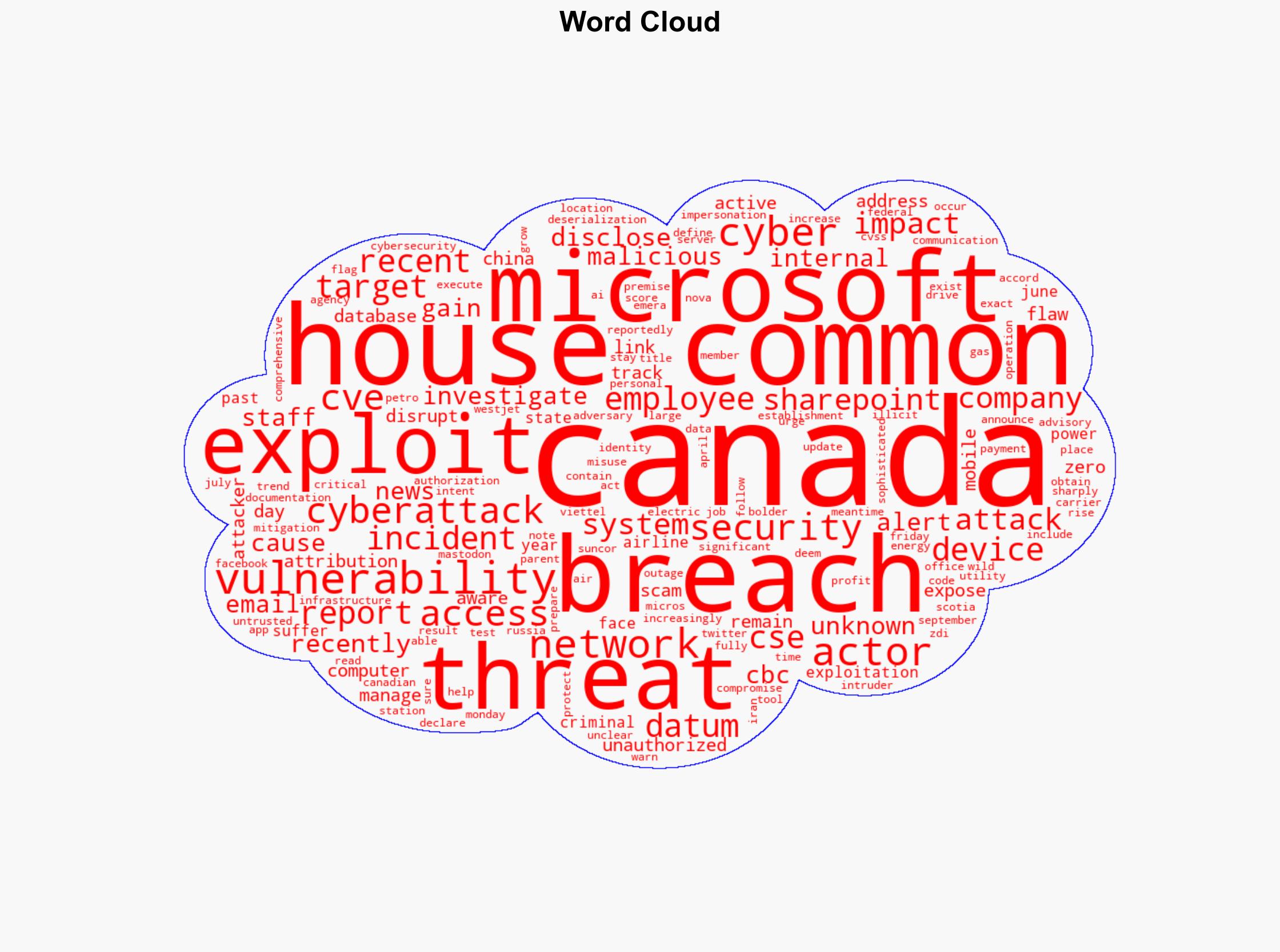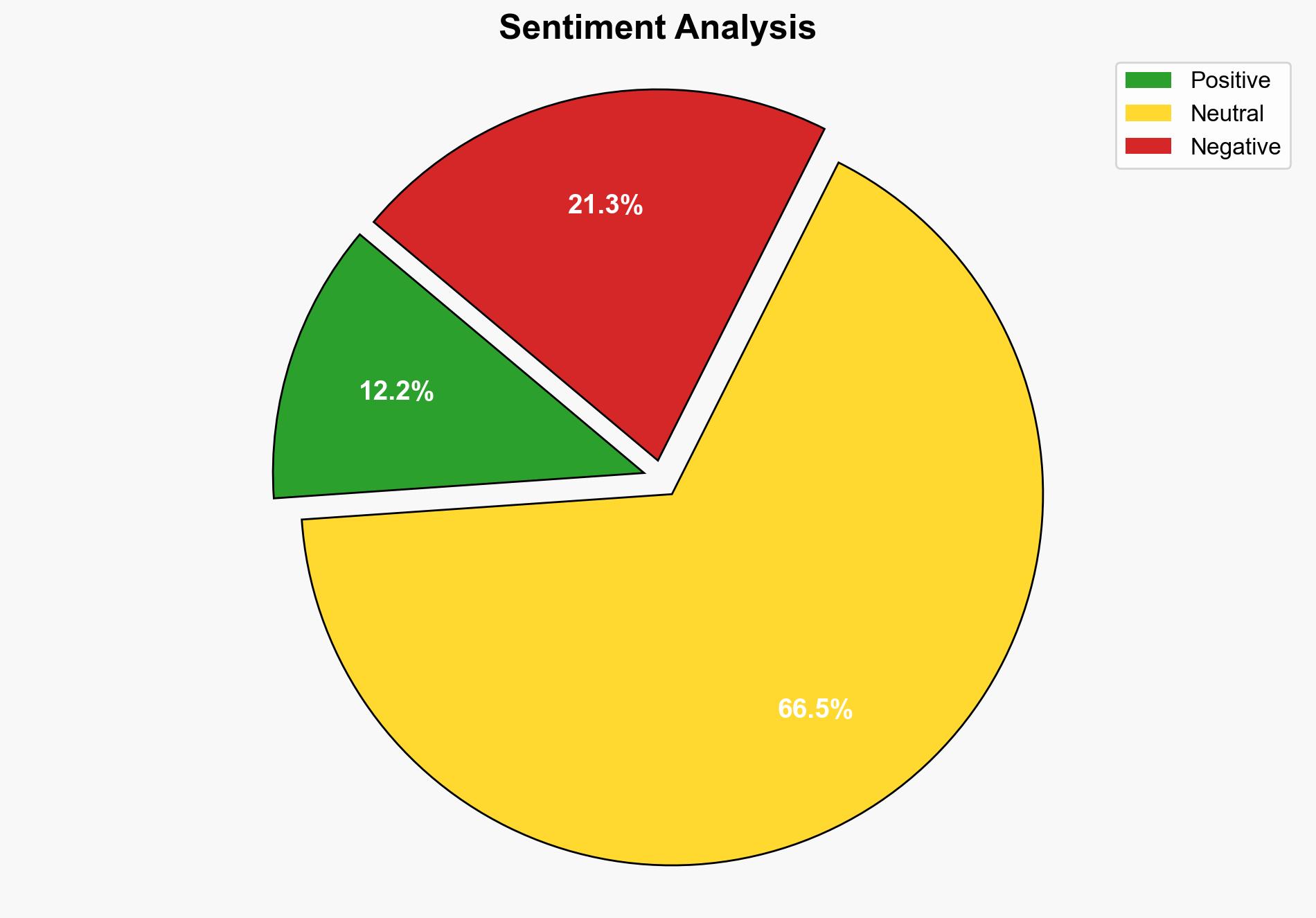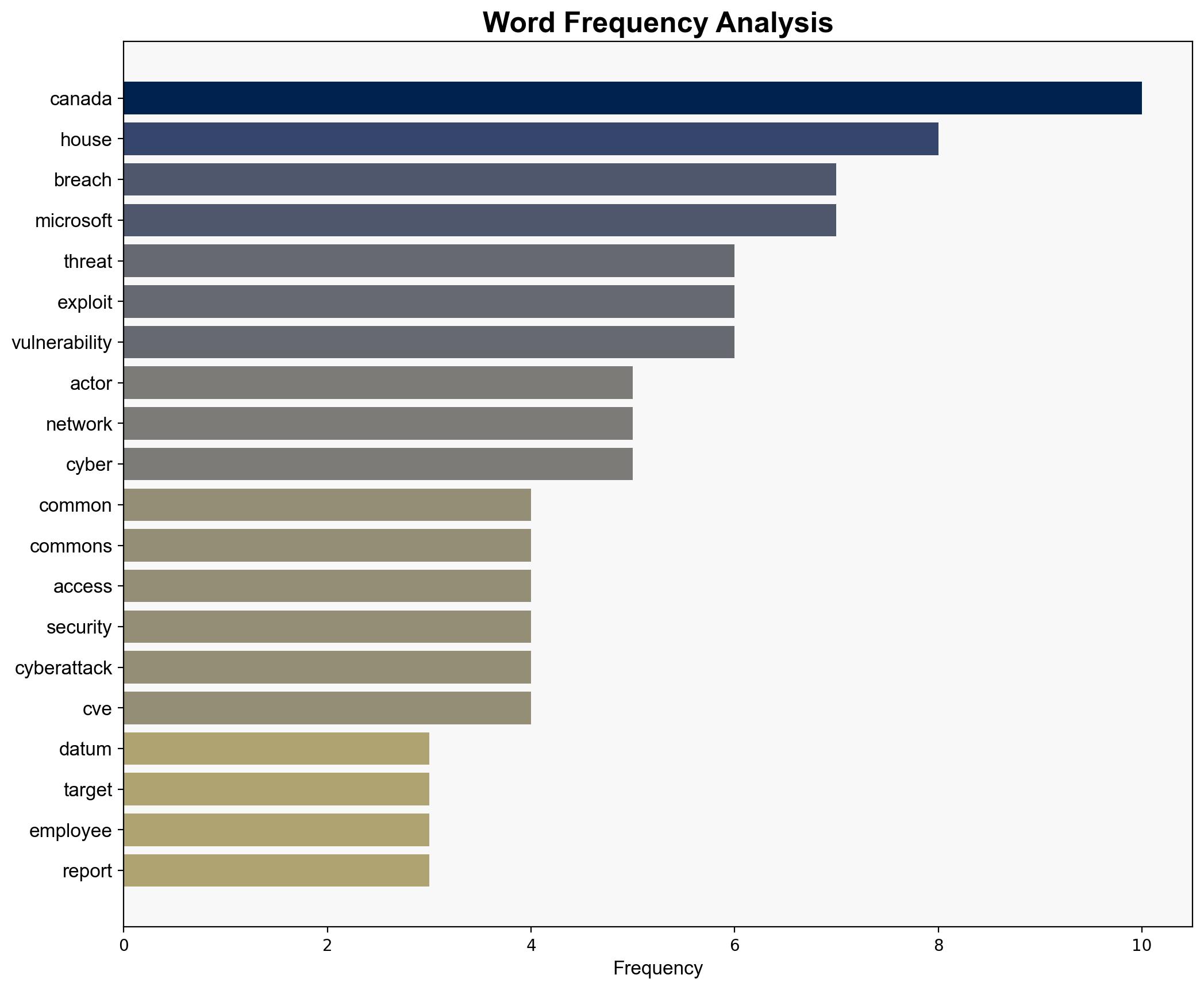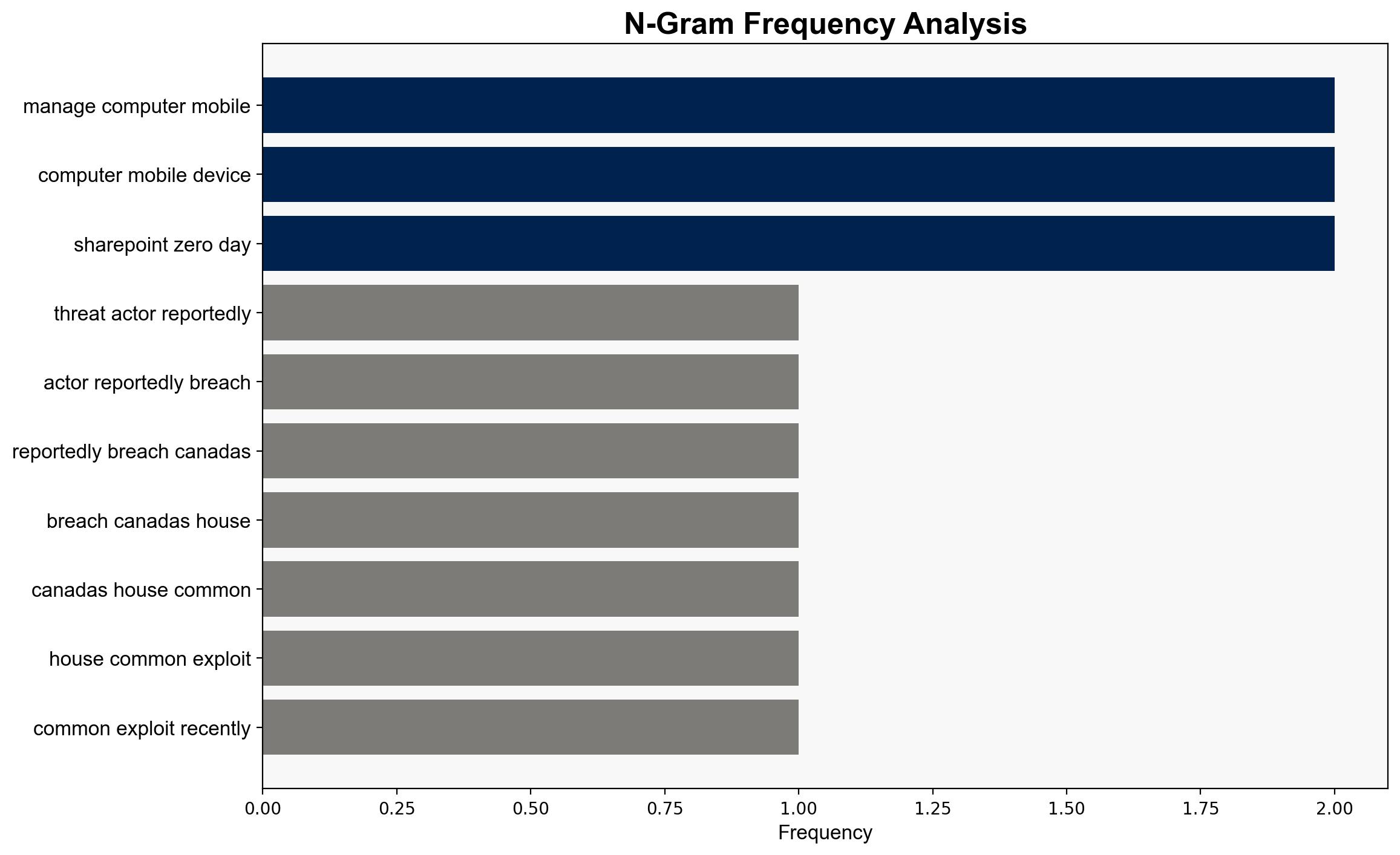Hackers exploit Microsoft flaw to breach Canada s House of Commons – Securityaffairs.com
Published on: 2025-08-15
Intelligence Report: Hackers exploit Microsoft flaw to breach Canada’s House of Commons – Securityaffairs.com
1. BLUF (Bottom Line Up Front)
The breach of Canada’s House of Commons via a Microsoft vulnerability suggests a significant cybersecurity threat, potentially linked to state-sponsored actors or sophisticated criminal groups. The most supported hypothesis is that a state-sponsored actor, possibly from China, Russia, or Iran, exploited the vulnerability. Confidence in this assessment is moderate due to the lack of direct attribution. Immediate action is recommended to enhance cybersecurity protocols and collaboration with international partners for threat intelligence sharing.
2. Competing Hypotheses
1. **State-Sponsored Actor Hypothesis**: The breach was orchestrated by a state-sponsored actor, potentially from China, Russia, or Iran, aiming to gather intelligence or disrupt Canadian governmental functions. This is supported by the CSE’s report on increased targeting of Canada by these nations.
2. **Criminal Group Hypothesis**: The breach was conducted by a sophisticated criminal group seeking financial gain through data exploitation or ransom. This is plausible given the rise in profit-driven cyberattacks globally.
Using the Analysis of Competing Hypotheses (ACH) 2.0, the state-sponsored actor hypothesis is better supported due to the geopolitical context and historical patterns of state actors targeting governmental institutions. However, the criminal group hypothesis cannot be entirely dismissed without further evidence.
3. Key Assumptions and Red Flags
– **Assumptions**: It is assumed that the breach’s complexity indicates a high level of sophistication, typically associated with state actors. Another assumption is that the timing aligns with geopolitical tensions.
– **Red Flags**: The lack of specific attribution and details about the exact vulnerability exploited raises questions. The possibility of internal collusion or negligence should not be overlooked.
– **Blind Spots**: Limited information on the attackers’ identity and motives creates a significant gap in the analysis.
4. Implications and Strategic Risks
The breach could lead to further exploitation of sensitive information, impacting national security and diplomatic relations. It may also embolden other threat actors to target Canadian infrastructure. Economically, it could affect public trust in digital systems, leading to increased costs in cybersecurity measures. Geopolitically, it could strain relations with nations suspected of involvement, potentially escalating into cyber conflicts.
5. Recommendations and Outlook
- Enhance cybersecurity measures across governmental networks, focusing on patch management and vulnerability assessments.
- Strengthen international collaboration for intelligence sharing and joint cyber defense initiatives.
- Conduct a thorough investigation to identify the attackers and their methods, potentially involving private sector cybersecurity experts.
- Scenario Projections:
- **Best Case**: Rapid identification and neutralization of the threat actor, leading to improved cybersecurity resilience.
- **Worst Case**: Continued exploitation of vulnerabilities, resulting in significant data breaches and geopolitical tensions.
- **Most Likely**: Incremental improvements in cybersecurity posture, with ongoing threats from both state and non-state actors.
6. Key Individuals and Entities
– Canada’s House of Commons
– Communications Security Establishment (CSE)
– Microsoft (related to the vulnerability)
7. Thematic Tags
national security threats, cybersecurity, counter-terrorism, regional focus





